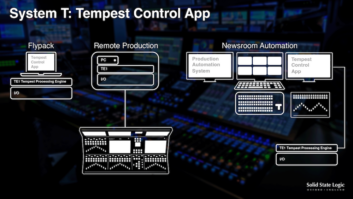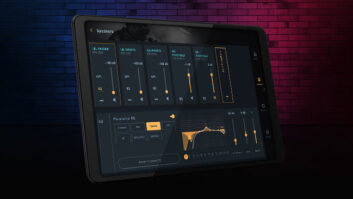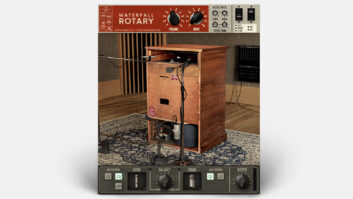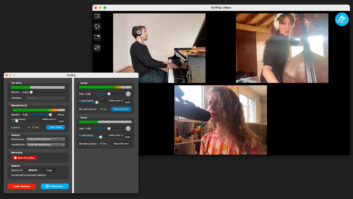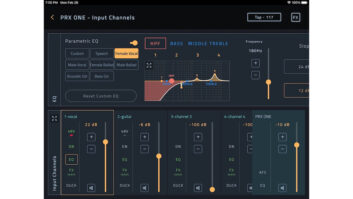SALT LAKE CITY, UTAH – FEBRUARY 2013: The University of Utah’s Libby Gardner Hall is large enough to comfortably accommodate a 200-member choir, an 80-piece orchestra, and nearly 700 audience members. It is acoustically and aesthetically stunning, with a warm, rich reverb conveyed by wood panel walls arranged in a spectacular geometry. For years, the school struggled to provide the hall with sound reinforcement for spoken word, solos, and non-classical musical forms that matched the splendor of unamplified instruments. That struggle ended with the purchase of a high-end K-Array mobile PA system, but the fact that it would be placed at different areas of the stage for different types of events meant that well-balanced equalization in one location would be unbalanced at another. A simple, cost-effective, and equally high-fidelity Symetrix Jupiter 12 DSP solved that problem by allowing straightforward selection of different equalization curves from authorized users’ smartphones and other Internet-connected devices via Symetrix’ ARC-WEB user interface.
“I joined the University of Utah faculty twelve years ago,” said David M. Cottle, music tech specialist and director of the electronic music and recording studios. “I was responsible for recording and sound reinforcement in our three performance halls. The first week I was here, I disconnected the existing speakers in Libby Gardner Hall, our premier performance space. The hall is built for acoustic performance, and the installed speakers did no more than muddy the speaker’s voice. From then on, we made announcements without a microphone until we could find a better solution. We started to investigate phased arrays, which have a wide horizontal, but narrow vertical pattern. The first system we tried was a clear improvement: extremely low feedback, even distribution, clear response across the spectrum, and very little reflection. But it was also flawed. It had weak low end, was noisier than I had hoped, and proved bulky to move.”
Salt Lake City-based Performance Audio stepped in with a better solution: a K-Array KK 200 full-range tower, KK S50 subwoofer, with KA 40 and KA 10 amplifiers, all in a stereo set. “As expected, the K-Array system has the same positive properties as the previous phased array,” said Cottle. “Feedback is practically non-existent, and the dispersion is even and horizontal. The system controls the reverb in the room very well. But in addition, the K-Array subs are solid enough for occasional student talent shows and the system is quieter, and easier to move.”
When the new system would be used as the primary source of sound for a performance, it would have to be located toward the front edge of the stage. In contrast, when the system would be used to augment a mostly-acoustic performance, it would be located behind the performers. “When located behind the performers, the sound is less like a PA and more like a richer, blended ensemble,” explained Cottle. “For example, a mic’d piano with orchestral accompaniment isn’t noticeably louder. It can simply be heard with all the other instruments.” However, the system gets a pronounced low-frequency buildup when located behind the performers.
“By providing the school with a Symetrix Jupiter 12 app based turn-key DSP, we were able to give them the EQ curves to match the two locations, along with the flexibility to accommodate other positions should they need them in the future,” said Jake Peery, system design and installation expert with Performance Audio and the individual responsible for designing Libby Gardner Hall’s new reinforcement system. The system currently uses eight of the Jupiter 12’s twelve inputs and two of its four outputs. Many of the inputs combine using Symetrix’ sophisticated automixing algorithm, and mixer inputs accommodate larger, multi-mic performances. A hardwired Symetrix ARC-2e wall panel remote controls the volumes of two Sennheiser G3 wireless microphones used for announcements and spoken-word events.
In addition, Peery used Symetrix ARC-WEB to give Cottle and other authorized users control of the system from their smartphones, iPads, or other Internet-connected devices. “They can select the proper EQ curves for the loudspeaker locations and control the volumes of the wireless microphones or other inputs right from their phones,” said Peery. “They really liked that idea.” Since the new system’s installation, Cottle has received numerous compliments from faculty, students, and audience members. “The other night, we mixed a jazz band, which is one of the most difficult ensembles to control, even without a PA,” he said. “The Director said that it was the best the band had ever sounded in Libby Gardner Hall. The solos were present, but not piercing, and the rhythm section sounded homogeneous.”
ABOUT SYMETRIX Symetrix engineers high-end professional audio solutions, specializing in DSP hardware and software. Symetrix products are distributed worldwide, and designed and manufactured in the U.S. at the Seattle area headquarters. Since 1976, customers have enjoyed the benefits of Symetrix’ independent ownership and management. For more information on Symetrix professional audio products, please visit www.symetrix.co or call +1 (425) 778-7728.
